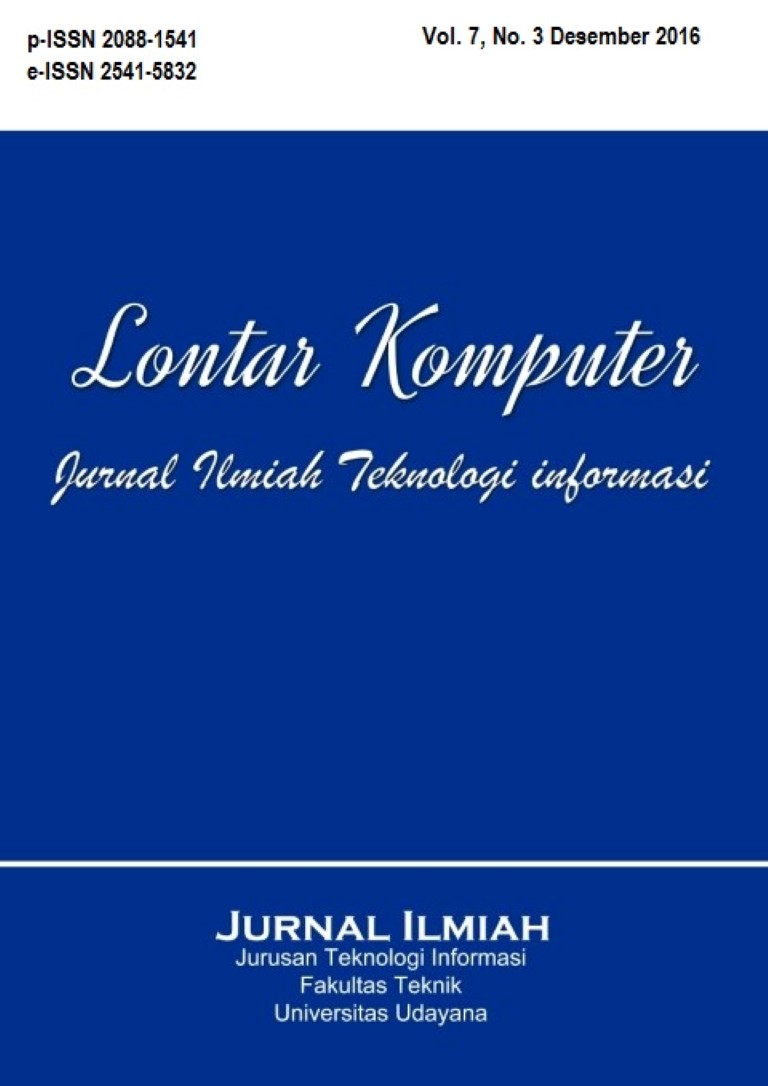Pembentukan Data Mart Menggunakan Metode Generalization
Abstract
Technology today causing the data needs of an agency or company to process the data or analyze data quickly, dense and higher. Companies or institutions want the data analysis process can save time as much as possible. The data warehouse is a data analysis technology that is useful to resolve the issue. The data warehouse is a repository of data that is useful to accommodate all the history data held by agencies or companies. Data marts are small part of the data warehouse. Data mart is focused on a single subject. This study uses a generalization method to perform the process of establishing a data mart. Generalization is a useful method to reduce or narrow the differences in the data based Subclass. Subclass were integrated into a Superclass useful to collect some data from the Subclass. Subclass is the data that is more descriptive. Superclass is more general in nature of data. The result obtained is a collection of some Subclass predetermined or selected later formed a Superclass useful to accommodate the resources of the Subclass.
Downloads
References
[2] A. Parekh, “Introduction on Data Warehouse with OLTP and OLAP,” International Journal Of Engineering And Computer Science, vol. 2, no. 8, pp. 2569–2573, 2013.
[3] S. Bagui, “Mapping Generalizations and Specializations and Categories to Relational Databases,” Handbook of Research on Innovations in Database Technologies and Applications: Current and Future Trends, pp. 2009–2011, 2009.
[4] H. B. Zghal, S. Faïz, and H. Ben Ghézala, “CASME : A CASE Tool for Spatial Data Marts Design and Generation,” International Journal of Cooperative Information Systems., pp. 1–11, 2003.
[5] Y. Pitarch, C. Favre, A. Laurent, and P. Poncelet, “Context-aware generalization for cube measures,” Proceedings of the ACM 13th international workshop on Data warehousing and OLAP (DOLAP '10), p. 99, 2010.
[6] R. Liu, K. Koedinger, and E. a Mclaughlin, “Interpreting Model Discovery and Testing Generalization to a New Dataset,” Proceedings of the Seventh International Conference on Educational Data Mining, pp. 107–113, 2014.
[7] M. Golfarelli and S. Rizzi, Data warehouse design: Modern principles and methodologies. McGraw-Hill, Inc., 2009.
[8] A. Bonifati, F. Cattaneo, S. Ceri, A. Fuggetta, and S. Paraboschi, “Designing data marts for data warehouses,” ACM Transactions on Software Engineering and Methodology (TOSEM), vol. 10, no. 4, pp. 452–483, 2001.
[9] J. Eder and S. Kanzian, “Logical Design of Generalizations in Object-Relational Databases,” in East European Conference - Advances in Databases and Information Systems, 2004, vol. 8th.
Keywords
The Authors submitting a manuscript do so on the understanding that if accepted for publication, the copyright of the article shall be assigned to Jurnal Lontar Komputer as the publisher of the journal. Copyright encompasses exclusive rights to reproduce and deliver the article in all forms and media, as well as translations. The reproduction of any part of this journal (printed or online) will be allowed only with written permission from Jurnal Lontar Komputer. The Editorial Board of Jurnal Lontar Komputer makes every effort to ensure that no wrong or misleading data, opinions, or statements be published in the journal.
 This work is licensed under a Creative Commons Attribution 4.0 International License.
This work is licensed under a Creative Commons Attribution 4.0 International License.























